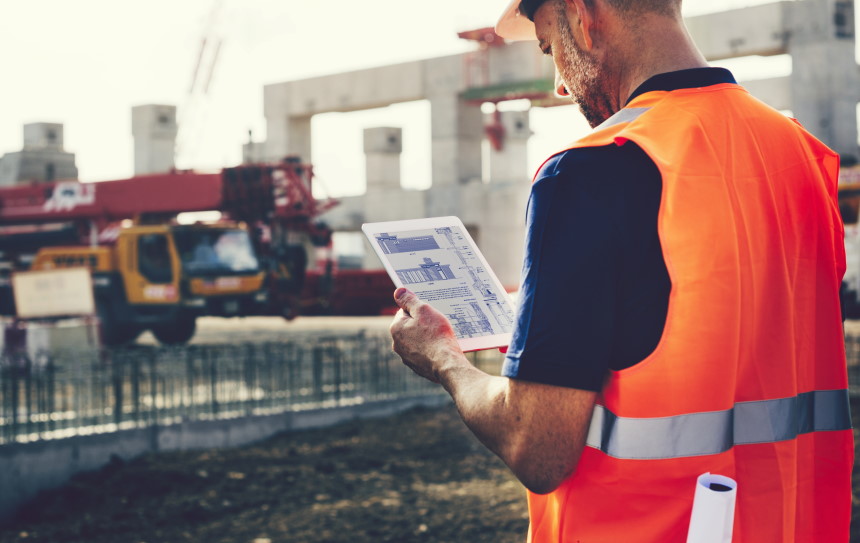
Despite technological progress, many construction companies have been slow to adopt digitalization and still heavily rely on manual data entry, paperwork, and spreadsheets.
Digitalization of construction technology brings practical applications and benefits such as cost reduction, less greenhouse gas emissions, and faster project completion.
Integrating digital solutions into your strategy and workflow will lend your construction company a competitive edge, boost efficiency, and ensure you’re better prepared for the oncoming digital shift.
In this article, we’ll look into the ways digital technology changes the construction industry for the better – and how doForms factor in to help.
What Is Digitalization In Construction Technology And What Makes It Essential?
Digitalization in the construction industry is the use of digital technology in the planning, design, operation, and management of the construction environment.
Digital technology addresses and solves some of the most frequent issues the construction industry faces, such as:
- The high risk involved in the construction process (for example, having all near-miss reports available in digital form at all times and using them to plan smarter)
- Large amounts of waste produced
- Setbacks in the process from early planning stages to construction completion
- Slow adaptation to new technologies
- Fragmentation of the industry, ie. many disciplines involved in a single project
Collect on-site data faster and send reports remotely.
Explore doForms features!
How Digitization Is Creating New Construction Technology
Digital technologies are becoming a standard in every industry, including construction. Let’s take a look at several different types of new construction technologies.
1. Mobile Technology
Project managers and contractors can monitor work progress remotely via mobile devices, from their offices or elsewhere, without having to travel to construction sites.
Employees can use mobile device forms and apps to contact each other, send updates on progress, and provide evidence of their work for inspection and verification.
These mobile solutions can also schedule work orders and report progress to management, significantly improving productivity. The cloud-based nature of this digital solution enables all relevant parties to access data in real time, which saves countless hours on a yearly basis.
2. Building Information Modeling
Building Information Modeling (BIM) allows for 3D digital depictions of construction plans instead of traditional 2D blueprints.
BIM 3D models depict the final look of the building more realistically. They also help contractors assess every detail of the project and conduct necessary changes in real time.
This digital technology is significantly shaping the future of the construction industry by using historical data and a predictive algorithm that plans projects in the most efficient way.
3. Augmented Reality And Wearables
BIM is often used in tandem with augmented or virtual reality (AR/VR) for better understanding and an overview of complex construction projects.
VR/AR allows contractors to “walk” around the building they are planning to construct. This helps them gain insights into what the project will look like and what issues they need to address before the construction starts.
Wearable technology also benefits job site safety and risk management. For example, smart glasses with a wide-angle camera and depth sensors allow workers to safely move across dangerous construction sites and collect important data to get the job done faster.
4. Artificial Intelligence
On-site robotics powered by artificial intelligence and machine learning can replace a human workforce to perform mundane or dangerous tasks. AI in the construction industry also includes on-site sensors and intelligence apps to boost safety and productivity.
AI-based algorithms report errors on construction sites based on detected differences between blueprints and the final design. Smart objects such as drones send aerial photography that AI can compare with BIM 3D models to detect any discrepancies in the project.
5. 3D Printing
3D printing changes the material sourcing in construction technology. Construction companies can print project materials that are then immediately ready for use.
This revolutionary technology streamlines the process and delivers building blocks much faster than before.
3D printing also reduces waste and saves on transportation and storage costs, because it is possible to print materials on-site when managers assess how much more material is required. This leads to much greener practices, as building-related waste makes up between 25% and 40% of the US solid-waste stream.
How doForms Helps You Digitize Building Construction Technologies
doForms can help your construction company digitize your data collection, storage, and management.
With doForms, you can locate where your equipment is with GPS tracking, assess whether a site is accessible, optimize heavy equipment inspection, schedule maintenance, and more.
Our mobile eForms enable you to:
- Create work order and site preparation checklists
- Track and document project progress and create daily reports
- Monitor equipment use and run safety reports for all equipment
- Create preventative checklists
- Dispatch work crews
- Configure data flow from QuickBooks, Salesforce, Excel, Access, SharePoint, and numerous other third-party integrations
doForms’ simple drop-down menus, in-form calculators, and timestamps allow you to select employee names easily, capture start and stop times, calculate work hours, and integrate this data into your personnel processes.
Let’s illustrate this with an example
One of our clients, JLL, embeds doForms into its construction planning and project management systems. The company recognized doForms with its own prize for an outstanding technical innovation introduced into the company.





